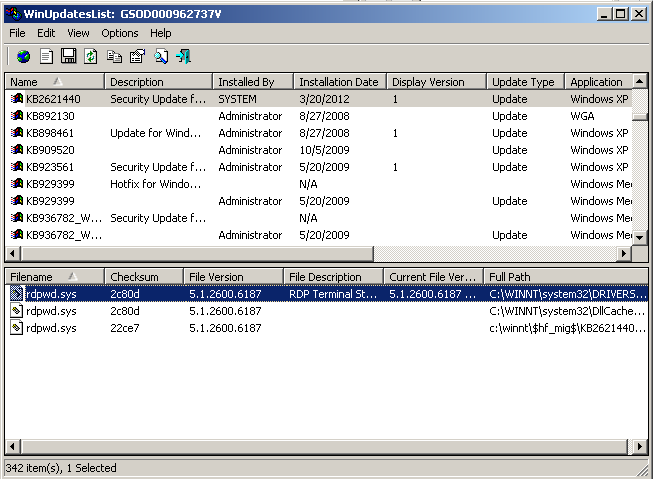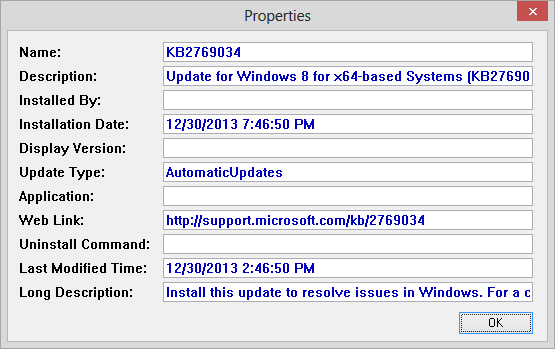WinUpdatesList (WUL) from NirSoft is a free program that can show you the list of intalled updates on a Microsoft Windows system. It was written by Nir Sofer.
You don't need to go through an install process to use the program, though an installer is available for download from the developer's website. If you don't want to go through an installation process, simply download the zip file containing the executable program from the developer's website and unzip the contents of the zip file. Within the zip file are 3 files:
| wul.exe | 43 KB |
| wul.chm | 15 KB |
| readme.txt | 9 KB |
Note: File sizes are for version 1.32, which is the current version.
The wul.chm file is a Compiled HTML Help file.
When you run wul.exe by double-clicking on it, you will see
a list of installed Windows updates, aka
"patches".
On Microsoft Window 98, ME, 2000, and Windows XP you will see a list of
files associated with the patch in the lower pane of the WUL window. On
Microsoft Windows 8, 7, Vista, and 2008 systems there is no information on
files installed by the update in the lower pane.

By default, the list of installed updates is ordered by name, but you can click on the column headers to sort by other criteria. E.g., you can click on the column header Installation Date to sort by date the patch was installed.
You can right-click on an entry in the upper pane of the window and choose "Properties" to see more details as shown in the example below, for the installed patch.

The utility can also be run from the command line with the following options:
Command-Line Options
| /stext <Filename> | Save windows updates list into a regular text file. |
| /stab <Filename> | Save windows updates list into a tab-delimited text file. |
| /scomma <Filename> | Save windows updates list into a comma-delimited text file. |
| /stabular <Filename> | Save windows updates list into a tabular text file. |
| /shtml <Filename> | Save windows updates list into HTML file. |
| /sverhtml <Filename> | Save windows updates list into HTML file. (vertical) |
| /sxml <Filename> | Save windows updates list into XML file. |
| /another <Windows Folder> |
connect to another instance of operating system on the same computer (Windows 2000/XP only).
You can combine this option with one of the save options in order to save the
Windows updates list of another operating system.
Examples:
|
| /remote <Computer Name> |
Connect to remote Windows 2000/XP operating system.
You can combine this option with one of the save options in order to save the
Windows updates list of a remote computer.
Examples:
|

